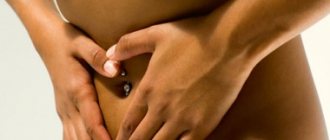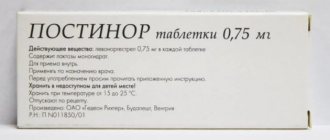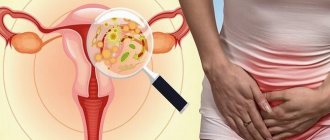It happens that after long-term treatment there is an alarming itching in the intimate area and strange leucorrhoea on the gusset. This is how thrush manifests itself after antibiotics. It would seem, how can a disease arise if the body has recently been cleansed of pathogenic microbes? No matter how paradoxical it may sound, it is the death of microorganisms that provokes the development of the fungus Candida albicans. We tell you why this happens and what to do if thrush occurs while taking antibiotics.
Thrush and its symptoms
Since men very rarely encounter thrush, the disease can rightfully be called a female disease. Candida fungus is the causative agent of candidiasis. It can affect both mucous membranes (intestines, oral cavity, genitals, respiratory tract) and skin. In most cases, she chooses a secluded place for her life - the female genital organs.
Yeast-like fungi are representatives of the normal microflora of the vagina of every woman. Under suitable and favorable conditions, fungi begin to reproduce and increase colonies. As a result, symptoms of thrush begin to appear. If nothing provokes the development of these opportunistic organisms, they do not cause discomfort and are not at all disturbing.
How to recognize thrush?
The first symptoms of the disease are expressed by itching and burning in the affected tissues of the genital organs. They have a negative impact on women's overall well-being and productivity. Remember! In order to avoid damage to the epithelium and deeper penetration of fungal infectious agents, it is forbidden to comb the affected areas.
A mandatory symptom of candidiasis is vaginal discharge. The released masses may look like cottage cheese or curdled milk. Their color is white or slightly creamy. Does the discharge have a specific odor? Usually yes, they do. Moreover, the smell is similar to sour fermented milk product. It is sometimes called "kefir".
Sex, urination, bathing or regular washing cause a burning sensation and are very painful. The skin of the genital organs and the mucous membrane with thrush swell, become red and inflamed. Not always, but often the labia and clitoris are covered with a white coating with a slightly gray tint. It’s not difficult to get rid of the formed plaque; you just need to take a piece of gauze or cotton wool (whatever you can find around the house) and remove it. Please note that the use of mechanical methods is strictly prohibited!
What antibiotics cause thrush
Candidiasis after antibiotics can develop in the mouth, intestines, and genitals equally often in women and men. Reasons: overdose, taking the drug for too long.
Antibiotics destroy not only pathogens, but also beneficial bacteria. When the microflora is disturbed, fungi multiply intensively.
Almost all antibiotics cause thrush:
- Penicillins – Benzicillin, Amoxicillin.
- Cephalosporins – Cefazolin, Ceftriaxone.
- Tetracyclines – Minolexin.
- Chloramphenicol – Levomycetin and Syntomycin.
- Aminoglycosides – Amikacin.
- Macrolides – Azithromycin, Erythromycin.
- Fluoroquinols – Ciprofloxacin, Levofloxacin.
Consequences of taking antibiotics
How do antibiotics work? The purpose of these products is to destroy bacteria, both beneficial and harmful. If an antibiotic drug has a detrimental effect on too many types of bacteria, many complications will occur later. For this reason, taking such drugs requires consultation with a doctor. Antibiotics begin the process of activation in the human intestines. As you know, this mucous membrane contains bacteria that digest food.
The sensitivity to various drugs in bacteria is increased, so it will not be difficult to destroy them. Microorganisms that belong to the class of opportunistic and pathogenic begin to grow in their habitat. These include the famous yeast-like fungi of the genus Candida. Possible consequences of this fact include gastrointestinal diseases. Don’t forget, antibiotics are systemic drugs, so they are absorbed into the general bloodstream. Ultimately they affect:
- all human systems and organs;
- cells of the mucous membranes of the genital tract and oral cavity.
Such moments undoubtedly affect the excess number of growing fungi, since antibiotics do not kill yeast-like microorganisms.
Do thrush symptoms change after taking antibiotics?
No, the symptoms remain the same. It should be noted that increased discomfort occurs both before and after menstruation.
Prevention
Any disease can be easily prevented, you just have to know how. Thrush is another proof of how, if you follow certain rules, you can always feel comfortable. Preventive measures to help prevent thrush after taking antibiotics:
- Regular adherence to personal hygiene rules (morning and evening showers, changing linen, timely replacement of hygiene products during menstruation).
- Balanced diet.
- Having one sexual partner.
- Timely treatment of gynecological diseases, infections and constipation.
- Regular visits to the gynecologist once every 6 months.
- Prevention measures also include giving up alcohol, smoking, junk food, and avoiding stress.
After the first symptoms of even a common cold, you should seek help from a doctor who will make an accurate diagnosis and prescribe an effective course of treatment.
Self-administration of medications can negatively affect the microflora, which will take several months to restore.
How to cure thrush?
After taking antibiotics, treatment of the disease should be comprehensive and include the areas described below. Initially, you should pay attention to the intestines and inflamed mucous membranes. That is, it is necessary to put their microflora in order. Normalization is achieved through the consumption of products that contain probiotics. These include yeast-free breads, yoghurts and kefir, and various types of cheeses. In order not to contribute to the development of infectious fungi, you need to exclude many foods from your diet.
Be sure to give up sweets (which can be an extremely difficult test for those with a sweet tooth), yeast baked goods and drinks based on them. You also need to limit salty, too spicy and fatty foods. To ensure the growth of microflora, suitable conditions should be created for this. Therefore, it is recommended to resort to the help of products, as well as drugs from the pharmacy, which include prebiotics. Effective foods include bananas, beans, oatmeal, and asparagus.
Treatment should include strengthening the immune system of the entire body. Therefore, you will need to take appropriate medications: complexes of vitamins and minerals, immunostimulants, immunosuppressants. (An example is the extract of a well-known herbal medicinal plant called ginseng).
The next mandatory activity is local restoration of functions to protect the affected mucous membranes. For genital thrush, soda baths can help (this method is described below). To treat the affected areas, douching and rinsing are used (if fungi attack the oral mucosa). Good results are achieved using solutions based on potassium permanganate, chamomile, kefir, and honey.
Preventive actions
When thrush occurs from antibiotics, treatment is often lengthy. It is difficult to cope with the problem on your own.
Attention! Drug therapy should be prescribed by a doctor after a thorough history taking and examination of the patient.
However, you can reduce the likelihood of developing chronic or recurrent pathology. To do this, you should adhere to the following recommendations for disease prevention:
- Expand your diet to include fermented milk products. The best option is to prepare yogurt or kefir at home using special starter cultures that contain lacto- and bifidobacteria, which make up a significant part of the normal human flora.
- Proper hygiene of intimate areas using neutral care products or gels containing lactic acid.
- Wearing underwear made from natural fabrics that does not restrict movement and does not cause discomfort.
- Quitting bad habits - alcohol, smoking.
- Limiting sugar, sweet foods, nutritional yeast products.
- Treatment of concomitant chronic diseases and background infections that reduce immunity and disrupt hormonal balance.
Treating thrush with medications
Therapy should be aimed at suppressing the quantitative indicator of Candida fungi and, naturally, at the use of drugs that will help restore vaginal microbiocenosis. If a fungal infection has just begun to develop, you need to react in time so that treatment can proceed quickly and without difficulty. Doctors often recommend starting with local medications - intravaginal tablets, suppositories, and the use of antifungal ointments and creams. Of the many existing ones, Natamycin and Nystatin (polyenes), Fluconazole and Ketoconazole (azoles) are well-known and effective.
Effective topical preparations:
- Pimafucin suppositories (active substance – natamycin);
- Livarol suppositories (active substance – ketoconazole);
- the drug Mikosist in the form of intravaginal tablets and suppositories. The active ingredient appears to be fluconazole.
The duration of treatment depends on the general picture of the disease. Basically it ranges from three to ten days. It must be remembered that antibiotics will not help get rid of thrush, as they provoke the proliferation of a fungal infection. Therefore, such remedies will in no way help in treating the ailment that has arisen.
Candidiasis during and after taking antibiotics
The skin on most of its “covering” and mucous membranes have their own microflora - maintaining the local balance at an acidic level and blocking foreign pathogens.
Its components can be harmless and conditionally pathogenic - prone to provoke diseases when local or general resistance is impaired. Thrush after antibiotics is extremely common because potentially dangerous microorganisms are “equipped” with a large “margin of safety”. They are often tried to kill them in various ways, and the list of drugs to which they already have resistance is wider than that of microorganisms without negative properties.
Thrush when taking antibiotics: causes
The yeast-like fungus of the genus Candida, as a provocateur of infection, belongs to the normal, but conditionally pathogenic microflora. It lives in a person’s mouth, rectum and nearby, on the genitals.
His insatiable passion for reproduction is compensated by the restraining activity of his “neighbors” in microflora. If the pseudomycelium of the fungus begins to “spread” over the surface, part of the colony will probably die.
While everything is relatively in order with general resistance, it cannot penetrate further than the outer layer, although it manages to spread to atypical areas, such as large skin folds, the area along the mammary glands in women and the armpits in men. With collapse, systemic candidiasis is possible with fungal damage to internal organs.
Thrush from antibiotics is almost inevitable because these drugs are not “trained” to distinguish between beneficial and pathogenic microorganisms. At the same time, Candida manages to survive due to its species. Antibiotics are primarily antibacterial agents, and mushrooms do not “take”.
Symptoms of candidiasis during antibiotic therapy
Children “acquire” this component of the microflora in the first years of life (from their parents, mainly their mother). And for the first time, its exacerbation can occur in a child or an adult, in a girl or woman, during pregnancy.
When they are provoked by medications (antibiotics, local antiseptics, hormonal therapy), the only noticeable difference from exacerbations caused by hypothermia, superinfection and other one-time causes is the gradual increase in symptoms. But their essence remains the same, is no different from the “classic” thrush and boils down to:
- redness;
- local edema;
- the appearance of bubbles filled with liquor over the entire affected area;
- persistent itching;
- a whitish coating with lumpy inclusions - pseudomycelium, the appearance of which gave it its “folk” name.
On smooth skin and nails, lesions look like poorly washed, ingrained chalk; in the armpits and other atypical places they can take on the appearance of a weeping reddish rash. On the tonsils and tongue, the fungus looks like a curd coating; on the lips it is similar to herpes simplex.
List of antibiotics that cause candidiasis
Almost all drugs of this type are among the “best friends of candida”:
- penicillins - benzicillin, moldamine, retarpin, kliacil, amoxicillin (over 50 items, the most extensive group);
- cephalosporins - cefazolin, cefuroxime, ceftriaxone, cefepime, ceftolozane (about 30 representatives of different generations, belong to beta-lactams, like penicillins);
- macrolides - azithromycin, erythromycin, myocamycin (up to 25 types in total), although in the case of them candidiasis is observed less frequently;
- tetracyclines - tetracycline itself, biomycin, doxycycline, oletethrin, minocycline (not the most extensive range, there are up to 20 “items”);
- chloramphenicol - sold under the trade names Levomycetin and Syntomycin (it is the only representative of the series due to its high toxicity);
- aminoglycosides - streptomycin, neomycin, gentamicin, amikacin (no more than 10 representatives, some do not develop due to toxicity, especially to the kidneys and hearing organs, used primarily as an anti-tuberculosis agent);
- glycopeptides - vancomycin, bleomycin, decaplanin (6 in total, mostly heavy cytostatics for chemotherapy for tuberculosis and plague);
- lincosamides - lincomycin, clindamycin (only 2; their long-term use sometimes even leads to systemic candida infections).
Relatively rarely, candidiasis after antibiotics is caused by fluoroquinolones - ciprofloxacin, oxolinic acid, levofloxacin, moxifloxacin. But they are not included in their list, having no natural analogues (antibiotics definitely have them).
Treatment
“Suppressing” the results of taking one pill by another is not the best idea. The optimal solution, if a patient develops thrush, is to discontinue the causative drug.
If the genitals are already itching, but the underlying pathology has not yet been cured, or the patient is taking antibiotics specifically to compensate for severe immunodeficiency, the main course cannot be canceled.
Drugs
The lion's share of antibiotics does not affect candida, but there are exceptions, such as:
- natamycin - known under the trade name Pimafucin or its own. Both have tablet, cream and suppository forms. The first 2 options are prescribed for use 3-4 times a day (tablets - 1 per dose, ointment - as needed). Suppositories are administered 1 at night. Thrush in women after antibiotics involves vaginal use, in men - rectal use. Thrush should be treated with them until the symptoms disappear, plus another 5 days. Prices for them in tablet/suppository/cream format look like this: Pimafucin - 530-550/467-490/266-373 rubles, natamycin - 516-530/490-506/3-5-330 rubles;
- nystatin – sold under its own “name” in suppositories, tablets and ointments. The daily dosage of the drug when taken orally is no more than 3,000,000 units (in severe cases - up to 6,000,000 units). Candles shown are 1 pc. morning and evening, ointment - as needed. Therapy lasts until the end of the relapse plus 3-5 days. The cost of nystatin compared to its chemical “brother” natamycin is budget. Suppositories will cost 40-80 rubles for 10 pieces, ointment - 43-59 rubles, tablets - 38-112 rubles;
- amphotericin – familiar to most as Amphotericin B. The drug has the widest spectrum of action among those listed. The ointment with it is used 2 times a day, for 10 days or longer. Amphotericin B is also administered intravenously, with a dropper, up to 3 times a week, 250 units per 1 kg of the patient’s body weight. You can buy ointment for 28-30 rubles, powder for infusions - for 23-45 rubles.
But much more often, antibiotic-fungicides for candidiasis provoked by similar substances are prescribed by another group - imidazole derivatives, such as ketoconazole, clotrimazole, butoconazole. All of them have pronounced hepatotoxicity.
The catch is that azoles block an enzyme in the tissues of the fungus, which is also produced and used in metabolism by the human liver. Fluconazole is considered the safest in terms of side effects. It is part of Fluconazole itself, Diflucan and Mikosist, and is available in capsules, children's suspension and solution for infusion.
Thrush after taking antibiotics requires taking it orally, 1 time for the entire relapse. Systemic candidiasis is treated with a regimen of 400 mg of fluconazole on the first day, and then another 3-4 weeks of 200 mg. The daily dosage for infusions is the same, does not exceed 20 mg per minute once a day. You will have to spend 690 (4 pcs.) - 2190 (28 pcs.) rubles for capsules, and from 64 to 80 rubles for a solution.
Folk remedies
Chamomile extract is usually recommended in the “first row” here. In fact, during exacerbations of candidiasis, he is frankly weak.
An aqueous extract of celandine could be a good remedy for them, but it burns when applied to inflamed tissue. The optimal solution here is strong (1 tbsp.
per glass of boiling water, simmer covered for 10 minutes, leave until cool, strain) decoctions:
- calendula;
- sage;
- carnations;
- yarrow.
They are used for washing and douching 3 times a day. To restore the balance of local microflora, you can also use suppositories with lactic acid bacteria from the pharmacy.
But if the patient has access to homemade sour cream, kefir, yogurt or fermented baked milk, it is easier, faster and more effective (the composition of the “population” in them is usually more diverse) to use them - apply to the skin of the genitals in the morning and evening, repeat for 2-3 days.
Useful tips
Severe, rapidly spreading thrush when taking antibiotics is not that common. It is more typical for chemotherapy, where powerful cytostatics are used, and candidiasis with them is not the most dangerous of complications. This also happens when bone marrow fails, sometimes precisely as a “side effect” of cancer treatment (not only “chemotherapy,” but also radiotherapy).
Systemic “spread” of the fungus in a patient who has not previously suffered from severe immunodeficiencies requires immediate consultation with a doctor and discontinuation of the current drug, since it may be the “first sign” of fatal complications from it.
In classic cases (all the “causal sites” itch, but the number of lesions does not increase), it is preferable to contain the pathogen first with the help of folk remedies, and turn to fungicides from the pharmacy only if the herbs do not help and/or the microflora is in no hurry to recover on its own after the end of the course.
Features of therapy during pregnancy
Taking antifungal drugs orally/intravenously during gestation and lactation is prohibited. But with the exception of severe immunodeficiencies, patients are satisfied with their local use according to the prescribed regimen.
Local applications, including suppositories, allow the absorption of active substances into the systemic bloodstream (and therefore biolactate) within 2% of the dose taken, which is guaranteed to avoid their effect on the fetus/newborn.
Prevention: how to avoid?
Given the natural “desire” of antibiotics to destroy symbiotic bacteria along with the causative pathogen, it is impossible to prevent such a scenario. The only preventive measure here could be the local administration of suppositories with cultures of lacto- and bifidobacteria.
But the procedure would have to be repeated throughout the entire course of therapy, at least twice a day, plus several days after finishing taking the antibiotic. Therefore, you just need to come to terms with the peculiarities of the action of drugs of this type.
Source: https://lechenie-molochnicy.info/kandidoz-posle-antibiotikov.html
Why use Pimafucin suppositories during pregnancy?
Pregnancy is a period during which you need to be treated only with safe means that do not have a negative effect on the unborn baby. For this reason, women should only be treated locally. The best means of control, allowed at any stage of pregnancy, are Pimafucin suppositories. This medicine is non-toxic, is not absorbed into the blood and does not affect the baby in the womb. Before inserting the suppository into the vagina, the woman should wash herself well.
Candles allow you to get rid of the unpleasant symptoms of thrush in 3–9 days. (It is worth noting that improvements are noted after the introduction of the second suppository, but this does not serve as a reason to stop the treatment process). If any complications are observed during thrush (for example, cystitis), systemic medications are added to the treatment plan - injections, tablets. Parallel use of drugs belonging to one specific group (for example, only polyenes) helps to get rid of fungi in a relatively short period of time.
Azoles
Fluconazole®
Fluconazole® has less activity compared to ketoconazole® and intraconazole®. It is used if mild to moderate thrush occurs after antibiotics.
Ketoconazole®
In terms of the spectrum of action and degree of effectiveness, it is close to Amphoterin B®, however, it has a significantly smaller number of side effects. Instructions below.
- diarrhea, abdominal pain;
- systemic allergic reactions, most often to fluconazole®;
- agranulocytosis and thrombocytopenia;
- cholestatic effect;
- when treated with ketonazole®, there may be a decrease in the synthesis of steroid hormones, gynecomastia, oligospermia in men, irregularities in the menstrual cycle in women;
- neurotoxic effect (headache, seizures, decreased vision).
Tablets for thrush
- Doctors often prescribe Livarol tablets to patients. To quickly get rid of annoying fungi, along with them you need to be treated with Livarol suppositories. This drug has contraindications for pregnant women - it is prohibited in the first trimester.
- Pimafucin, Levorin in tablet form allow you to recover in a maximum of nine days. The minimum number of days for therapy is 6 days.
- Diflucan tablets against candidiasis. Their active substance is ketoconazole. Treatment consists of a single dose of the tablet. The drug is popular in the treatment of thrush caused by taking antibiotics. Contraindicated during pregnancy or breastfeeding.
Therapy at the initial stage of the disease
Medications that have no effect on the body as a whole - vaginal tablets, suppositories, ointments - are the best choice for getting rid of uncomplicated candidiasis colpitis. Thrush after antibiotics, which has a mild form, can be quickly stopped by the following means:
- Clotrimazole (offered in the form of liniment, as well as tablets inserted into the vagina) is an excellent budget medicine for treating the disease.
- Zalain is a topical drug with prolonged action. Therapy consists of a single use of a suppository. To treat inflammation of the labia, it is recommended to use an ointment of the same name.
- Livarol (analogues - Fungistab, Dermazol, Mycozoral) - highly effective vaginal suppositories. Contraindications include pregnancy (first trimester) and individual intolerance.
In some cases, gynecologists advise taking 1 capsule of Duflucan orally (effective daily dose - 150 milligrams) or using its cheaper analogue Fluconazole.
Traditional treatment of candidiasis
There are many well-known folk methods for eliminating uninvited guests - yeast-like fungi. Today we will look at the most famous and effective ones.
Garlic against fungus
Homemade garlic candles will be an excellent option for therapy at home. For this treatment you will need to prepare vegetable oil, gauze, and one clove of garlic. It's simple: take a clove, then soak it in oil. Next, to place it in the vagina, you need to wrap it in gauze. The residence time of this type of suppository in the vagina is about 30 minutes. If you experience very unpleasant sensations in the form of a burning sensation, remove the candle immediately. Therapeutic therapy is carried out for about a week or ten days. By the way, garlic suppositories are prohibited during pregnancy!
Soda - a remedy that has been proven over the years
Thanks to soda, an alkaline environment is formed, which is not suitable for the life of fungi. Thus, they gradually begin to die and the disease leaves the woman. This folk remedy is used both for douching and for baths. To douche, combine half a teaspoon of soda with 0.5 liters of water. The released masses, reminiscent of cottage cheese in consistency, are easily washed out, and the vaginal mucosa will quickly regain a healthy state.
To make a soda bath, take a basin and fill it with warm water. Then pour the prepared soda solution into the water, as well as an iodine-based solution. The components are taken in the following proportions - a teaspoon of iodine per liter of water, soda is required in the same amount. Take baths every day until symptoms disappear completely.
Soap helps not only in the household
To treat candidiasis with laundry soap, you first need to find soap in stores. It is recommended to use only natural and high quality products. So be careful when purchasing. It has long been known that laundry soap is an excellent remedy for fighting harmful bacteria. It contains fats that soften the mucous membrane of the genital organs. Preparing a soap solution is simple: you need to carefully dilute the soap in water.
The vagina should be washed deeply so that the resulting solution reaches the infectious diseases and has a detrimental effect on them. After completing the procedure, use clean water to wash. This therapy lasts for a week. Repeat it twice - in the morning and before bedtime. It is worth mentioning the positive effects of other soaps, which help relieve inflammation and destroy Candida fungi. This is tar soap. The method of use does not differ from the economic treatment method.
Traditional medicine recipes
To combat thrush, use strong herbal decoctions prepared in one way:
- Pour 1 tablespoon of raw material into a glass of boiling water and keep on low heat for 10 minutes;
- Cool without removing the lid, strain and use.
What to choose as raw material? Candida albicans fungi do not like calendula, sage, cloves, and yarrow. Use herbal infusions for douching and washing, at least 3 times a day.
If you have access to homemade sour cream, yogurt, kefir, at the same time maintain the bacterial composition of the microflora: spread fermented milk “cream” on the skin of the genitals, and after 30 minutes, rinse with warm water. Repeat the procedure morning and evening for three days.
We warn you! Using chamomile extract in the acute stage, do not expect improvement. The remedy works only at the very beginning of the disease. The aqueous extract of celandine recommended by herbalists will only intensify the burning sensation in the inflamed tissues.
How to prevent the development of candidiasis?
In order to avoid encountering such a common disease, women are obliged to constantly maintain intimate hygiene. It is prohibited to use detergents, soaps, shower gels with various fragrances. For douching, you should not choose products that have an antibacterial or antiseptic effect. If thrush occurs during menstruation, it is recommended to change pads more often, because prolonged wearing will lead to the formation of an environment with high humidity, which candida loves so much. Remember that the trousers and skirts you wear should not create discomfort and fit snugly to your body. When it comes to underwear, you should give preference to natural fabrics. An important role is played by the treatment of all kinds of ongoing diseases: chronic, infectious. Women should also avoid drinking alcohol, smoking, sweets and any foods high in sugar, yeast baked goods, kvass, sweet fruits, etc.
The danger of thrush
The disease can worsen:
- intimate relationships between partners who love each other;
- general condition of the woman;
- the ability to concentrate on specific tasks.
Thrush is not as dangerous, but a fungal infection can still spread and affect
- cervix;
- skin located in the genital area;
- urethra;
- bladder.
If the disease proceeds in a chronic form, inflammatory processes in the above-mentioned organs, as well as various pathologies (for example, urethritis, cystitis), cannot be ruled out. Candidiasis is easily transmitted to the unborn baby both during pregnancy and during childbirth. This common disease is sometimes the cause of spontaneous abortion. Remember that self-medication is harmful! Therefore, as soon as you hear the alarm bell of thrush, go to the doctor. After all, prescribing examinations and correct treatment methods are within his competence.
If you have any questions regarding a popular female ailment - thrush, you have the opportunity to consult with a specialist doctor on our site! Do not delay treatment so that thrush does not become chronic or lead to serious diseases of other organs.
Diet
How to defeat thrush? The first thing you need to do is follow a diet. The basis of the diet should be fermented milk products, which contain a large supply of beneficial bacteria. Moreover, it is necessary to use natural products, and not products from stores.
It is also important to eat:
- fresh vegetables and fruits;
- legume products;
- natural juices, compotes and fresh juices.
In addition, it is necessary to maintain hygiene, lead a healthy lifestyle, get more rest and perform douching procedures with soda or other solutions. Diet is the basis of health, so if you decide not to easily cure a disease, but to really get healthier, then you need to start with proper nutrition.
- Traditional medicine recommends treating thrush with garlic. Moreover, you can use it not only orally, but also apply it to the vagina. But before placing it in the vagina, you need to wrap it in a bandage or gauze. It is necessary to place garlic in the vagina for 5–8 hours and preferably during sleep or rest. By repeating these procedures for 2-3 days, you can completely get rid of the disease.
- Wearing things made from natural materials. Tight and synthetic clothing should be avoided. Fungal spores contribute to the development of thrush from antibiotics if a woman wears underwear that does not allow the genitals and skin to “breathe.”
- Compliance with basic hygiene requirements. In addition to brushing your teeth, you should also monitor your perineal hygiene. To speed up the recovery process, you need to use toilet paper correctly. Otherwise, bacteria may enter the vagina.
During an illness with thrush, it is also important to carry out drug treatment. Let’s find out in more detail what it is.











